The Citrobacter rodentium type III secretion system effector EspO affects mucosal damage repair and antimicrobial responses
- PMID: 30365535
- PMCID: PMC6221368
- DOI: 10.1371/journal.ppat.1007406
The Citrobacter rodentium type III secretion system effector EspO affects mucosal damage repair and antimicrobial responses
Abstract
Infection with Citrobacter rodentium triggers robust tissue damage repair responses, manifested by secretion of IL-22, in the absence of which mice succumbed to the infection. Of the main hallmarks of C. rodentium infection are colonic crypt hyperplasia (CCH) and dysbiosis. In order to colonize the host and compete with the gut microbiota, C. rodentium employs a type III secretion system (T3SS) that injects effectors into colonic intestinal epithelial cells (IECs). Once injected, the effectors subvert processes involved in innate immune responses, cellular metabolism and oxygenation of the mucosa. Importantly, the identity of the effector/s triggering the tissue repair response is/are unknown. Here we report that the effector EspO ,an orthologue of OspE found in Shigella spp, affects proliferation of IECs 8 and 14 days post C. rodentium infection as well as secretion of IL-22 from colonic explants. While we observed no differences in the recruitment of group 3 innate lymphoid cells (ILC3s) and T cells, which are the main sources of IL-22 at the early and late stages of C. rodentium infection respectively, infection with ΔespO was characterized by diminished recruitment of sub-mucosal neutrophils, which coincided with lower abundance of Mmp9 and chemokines (e.g. S100a8/9) in IECs. Moreover, mice infected with ΔespO triggered significantly lesser nutritional immunity (e.g. calprotectin, Lcn2) and expression of antimicrobial peptides (Reg3β, Reg3γ) compared to mice infected with WT C. rodentium. This overlapped with a decrease in STAT3 phosphorylation in IECs. Importantly, while the reduced CCH and abundance of antimicrobial proteins during ΔespO infection did not affect C. rodentium colonization or the composition of commensal Proteobacteria, they had a subtle consequence on Firmicutes subpopulations. EspO is the first bacterial virulence factor that affects neutrophil recruitment and secretion of IL-22, as well as expression of antimicrobial and nutritional immunity proteins in IECs.
Conflict of interest statement
The authors have declared that no competing interests exist.
Figures
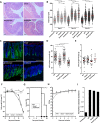
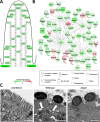
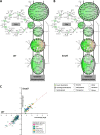
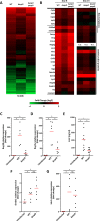

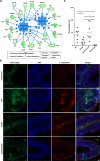

Similar articles
-
Citrobacter rodentium-host-microbiota interactions: immunity, bioenergetics and metabolism.Nat Rev Microbiol. 2019 Nov;17(11):701-715. doi: 10.1038/s41579-019-0252-z. Epub 2019 Sep 20. Nat Rev Microbiol. 2019. PMID: 31541196 Review.
-
The accessory type III secretion system effectors collectively shape intestinal inflammatory infection outcomes.Gut Microbes. 2025 Dec;17(1):2526134. doi: 10.1080/19490976.2025.2526134. Epub 2025 Jul 2. Gut Microbes. 2025. PMID: 40599135 Free PMC article.
-
Bacterial virulence factor inhibits caspase-4/11 activation in intestinal epithelial cells.Mucosal Immunol. 2017 May;10(3):602-612. doi: 10.1038/mi.2016.77. Epub 2016 Sep 14. Mucosal Immunol. 2017. PMID: 27624779 Free PMC article.
-
Intestinal Epithelial Cells and the Microbiome Undergo Swift Reprogramming at the Inception of Colonic Citrobacter rodentium Infection.mBio. 2019 Apr 2;10(2):e00062-19. doi: 10.1128/mBio.00062-19. mBio. 2019. PMID: 30940698 Free PMC article.
-
Type III secretion system effector subnetworks elicit distinct host immune responses to infection.Curr Opin Microbiol. 2021 Dec;64:19-26. doi: 10.1016/j.mib.2021.08.008. Epub 2021 Sep 16. Curr Opin Microbiol. 2021. PMID: 34537517 Review.
Cited by
-
Overview of the Effect of Citrobacter rodentium Infection on Host Metabolism and the Microbiota.Methods Mol Biol. 2021;2291:399-418. doi: 10.1007/978-1-0716-1339-9_20. Methods Mol Biol. 2021. PMID: 33704766 Review.
-
MicroRNA-127 Promotes Anti-microbial Host Defense through Restricting A20-Mediated De-ubiquitination of STAT3.iScience. 2020 Jan 24;23(1):100763. doi: 10.1016/j.isci.2019.100763. Epub 2019 Dec 10. iScience. 2020. PMID: 31958753 Free PMC article.
-
The type III secretion system effector EspO of enterohaemorrhagic Escherichia coli inhibits apoptosis through an interaction with HAX-1.Cell Microbiol. 2021 Sep;23(9):e13366. doi: 10.1111/cmi.13366. Epub 2021 Jun 24. Cell Microbiol. 2021. PMID: 34021690 Free PMC article.
-
Simulated Colonic Fluid Replicates the In Vivo Growth Capabilities of Citrobacter rodentium cpxRA Mutants and Uncovers Additive Effects of Cpx-Regulated Genes on Fitness.Infect Immun. 2022 Sep 15;90(9):e0031422. doi: 10.1128/iai.00314-22. Epub 2022 Aug 24. Infect Immun. 2022. PMID: 36000875 Free PMC article.
-
An acetate-yielding diet imprints an immune and anti-microbial programme against enteric infection.Clin Transl Immunology. 2021 Jan 15;10(1):e1233. doi: 10.1002/cti2.1233. eCollection 2021. Clin Transl Immunology. 2021. PMID: 33489123 Free PMC article.
References
-
- Barthold SW (1980) The microbiology of transmissible murine colonic hyperplasia. Lab Anim Sci 30: 167–173. - PubMed
Publication types
MeSH terms
Substances
Grants and funding
LinkOut - more resources
Full Text Sources
Other Literature Sources
Research Materials
Miscellaneous

